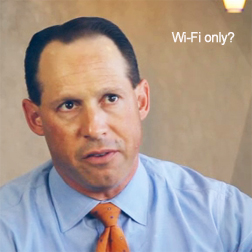When you work with startups that aspire to be corporations, you would be surprised how often it happens. One of the executives starts developing an organizational chart. The first thing they do is develop silos — disconnected departments that report to managers who report to the head.
If you mention how startups need to be more fluid (and all companies for that matter), they rebuff the notion by harkening back to the days when they worked at some company where they made up titles like guru and ninja. "Like that?"
Expect them to smile as they assign absurdity to the redefined suggestion. No, not like that.
Put processes before positions. I learned this at 16.
It applies to every department, but communication tends to be among the most confused. It's the reason so many companies report that their communication feels disconnected within the organization. The reason is that they fill positions without much thought for the process.
Many organizational charts end up with: marketing manager, designers, copywriters, public relations manager, public relations specialists, social media manager, social media specialists, web developers, web designers, programmers, app specialists, internal communication manager, international communicator, trade show specialists, and so on and so forth.
Given that this is just the communication department, there isn't any surprise many startups run out of money. They staff positions. Even if they don't, they eventually will because once an organizational chart is established, they will continually hire based on reactionary needs — we need more of this or that, as if people are produce and never mind that one of those team members doesn't do enough.
My first job was working at Wendy's. And while some people might take exception to idea that communication departments can be likened to quick service, they knew what they were doing. I've applied to it many permanent teams and ad hoc teams all my life. It's not the position, but the process.
How Wendy's organizes your lunch. The variables don't matter.
In a perfect world, Wendy's will staff one person on the register, one person on drinks, one person to make sandwiches, one person on order assembly. They duplicate this for the front and back (drive-thru). In the middle, serving both sections, one person staffs the grill (they are designed to have two grills if they are extremely busy) and one person staffs the fries. There are also support people, at least one in the back room and management in a pinch.
 That might sound like a lot of people and it is a lot of people. But these are not hard positions. There is a fluidity to the operation based on what needs to be done. The person on the register can also manage drinks and order assembly. The grill person can manage fries or even sandwich making in a pinch.
That might sound like a lot of people and it is a lot of people. But these are not hard positions. There is a fluidity to the operation based on what needs to be done. The person on the register can also manage drinks and order assembly. The grill person can manage fries or even sandwich making in a pinch.
In some cases and depending on the skills sets of the team available, every process can be covered by one or two people. There were some days that I worked every back register team position, along with fries, and assisted grill. It wasn't easy (or what corporate would have wanted), but I managed. Unexpected slams happen. It's also why I became a crew manager before moving onto a different job.
I'm not suggesting that one person do it all in a communication department, although some companies require it. But what I am suggesting is that you establish and prioritize the processes you need and cross train anybody who doesn't have the necessary skill sets much like Geoff Livingston and Gini Dietrich came close to suggesting in their book Marketing In The Round.
If the future of business is integrated, then companies need fluidity.
This isn't a 1950s economy. We don't need 1950s organizational charts. We need fluidity.
Writers need to learn multiple writing styles to communicate across different mediums, including some programming language skills. Designers ought to be comfortable with some programming language skills. Everybody needs to be presentable and professional, both online and off. And depending on the reason for contact, public relations can be adjusted up the scale.
Sure, there are some specialties that are always worthwhile (like database management), but that is the point. If you can prioritize which specialists you really need around the processes you expect to utilize the most, then the positions and job descriptions will make more sense. And everybody will know more about what is supposed to be done, even when someone calls in sick.
It's not limited to communication either. Many marketing professionals I've worked with are also exceptional product developers and are especially adept at designing user interfaces on paper if not in code. Some of them become good at these skill sets because of their interaction with customers online or during marketing research sessions. Some of them are also good with sales teams. Others have intuitive ideas about operations, budget priorities, media buys, etc.
It really just depends. And that is the point. How do you create an organizational chart based on positions when you don't understand the processes or the people who might fill the jobs? Even if you could, you might never maximize your proficiencies or replace people when they move on.
Or, like many companies, you may jeopardize the morale of the entire organization by trimming the fat you allowed to come on in the first place just because somebody needed a specific title and nobody else bothered to learn their job. Isn't that why companies can sometimes lay off hundreds? I think we might be smarter or more sensible by now. Think about processes first and then fill your organizational chart and outsource when you really do need a specialty.
If you mention how startups need to be more fluid (and all companies for that matter), they rebuff the notion by harkening back to the days when they worked at some company where they made up titles like guru and ninja. "Like that?"
Expect them to smile as they assign absurdity to the redefined suggestion. No, not like that.
Put processes before positions. I learned this at 16.
It applies to every department, but communication tends to be among the most confused. It's the reason so many companies report that their communication feels disconnected within the organization. The reason is that they fill positions without much thought for the process.
Many organizational charts end up with: marketing manager, designers, copywriters, public relations manager, public relations specialists, social media manager, social media specialists, web developers, web designers, programmers, app specialists, internal communication manager, international communicator, trade show specialists, and so on and so forth.
Given that this is just the communication department, there isn't any surprise many startups run out of money. They staff positions. Even if they don't, they eventually will because once an organizational chart is established, they will continually hire based on reactionary needs — we need more of this or that, as if people are produce and never mind that one of those team members doesn't do enough.
My first job was working at Wendy's. And while some people might take exception to idea that communication departments can be likened to quick service, they knew what they were doing. I've applied to it many permanent teams and ad hoc teams all my life. It's not the position, but the process.
How Wendy's organizes your lunch. The variables don't matter.
In a perfect world, Wendy's will staff one person on the register, one person on drinks, one person to make sandwiches, one person on order assembly. They duplicate this for the front and back (drive-thru). In the middle, serving both sections, one person staffs the grill (they are designed to have two grills if they are extremely busy) and one person staffs the fries. There are also support people, at least one in the back room and management in a pinch.
 That might sound like a lot of people and it is a lot of people. But these are not hard positions. There is a fluidity to the operation based on what needs to be done. The person on the register can also manage drinks and order assembly. The grill person can manage fries or even sandwich making in a pinch.
That might sound like a lot of people and it is a lot of people. But these are not hard positions. There is a fluidity to the operation based on what needs to be done. The person on the register can also manage drinks and order assembly. The grill person can manage fries or even sandwich making in a pinch.In some cases and depending on the skills sets of the team available, every process can be covered by one or two people. There were some days that I worked every back register team position, along with fries, and assisted grill. It wasn't easy (or what corporate would have wanted), but I managed. Unexpected slams happen. It's also why I became a crew manager before moving onto a different job.
I'm not suggesting that one person do it all in a communication department, although some companies require it. But what I am suggesting is that you establish and prioritize the processes you need and cross train anybody who doesn't have the necessary skill sets much like Geoff Livingston and Gini Dietrich came close to suggesting in their book Marketing In The Round.
If the future of business is integrated, then companies need fluidity.
This isn't a 1950s economy. We don't need 1950s organizational charts. We need fluidity.
Writers need to learn multiple writing styles to communicate across different mediums, including some programming language skills. Designers ought to be comfortable with some programming language skills. Everybody needs to be presentable and professional, both online and off. And depending on the reason for contact, public relations can be adjusted up the scale.
Sure, there are some specialties that are always worthwhile (like database management), but that is the point. If you can prioritize which specialists you really need around the processes you expect to utilize the most, then the positions and job descriptions will make more sense. And everybody will know more about what is supposed to be done, even when someone calls in sick.
It's not limited to communication either. Many marketing professionals I've worked with are also exceptional product developers and are especially adept at designing user interfaces on paper if not in code. Some of them become good at these skill sets because of their interaction with customers online or during marketing research sessions. Some of them are also good with sales teams. Others have intuitive ideas about operations, budget priorities, media buys, etc.
It really just depends. And that is the point. How do you create an organizational chart based on positions when you don't understand the processes or the people who might fill the jobs? Even if you could, you might never maximize your proficiencies or replace people when they move on.
Or, like many companies, you may jeopardize the morale of the entire organization by trimming the fat you allowed to come on in the first place just because somebody needed a specific title and nobody else bothered to learn their job. Isn't that why companies can sometimes lay off hundreds? I think we might be smarter or more sensible by now. Think about processes first and then fill your organizational chart and outsource when you really do need a specialty.





























